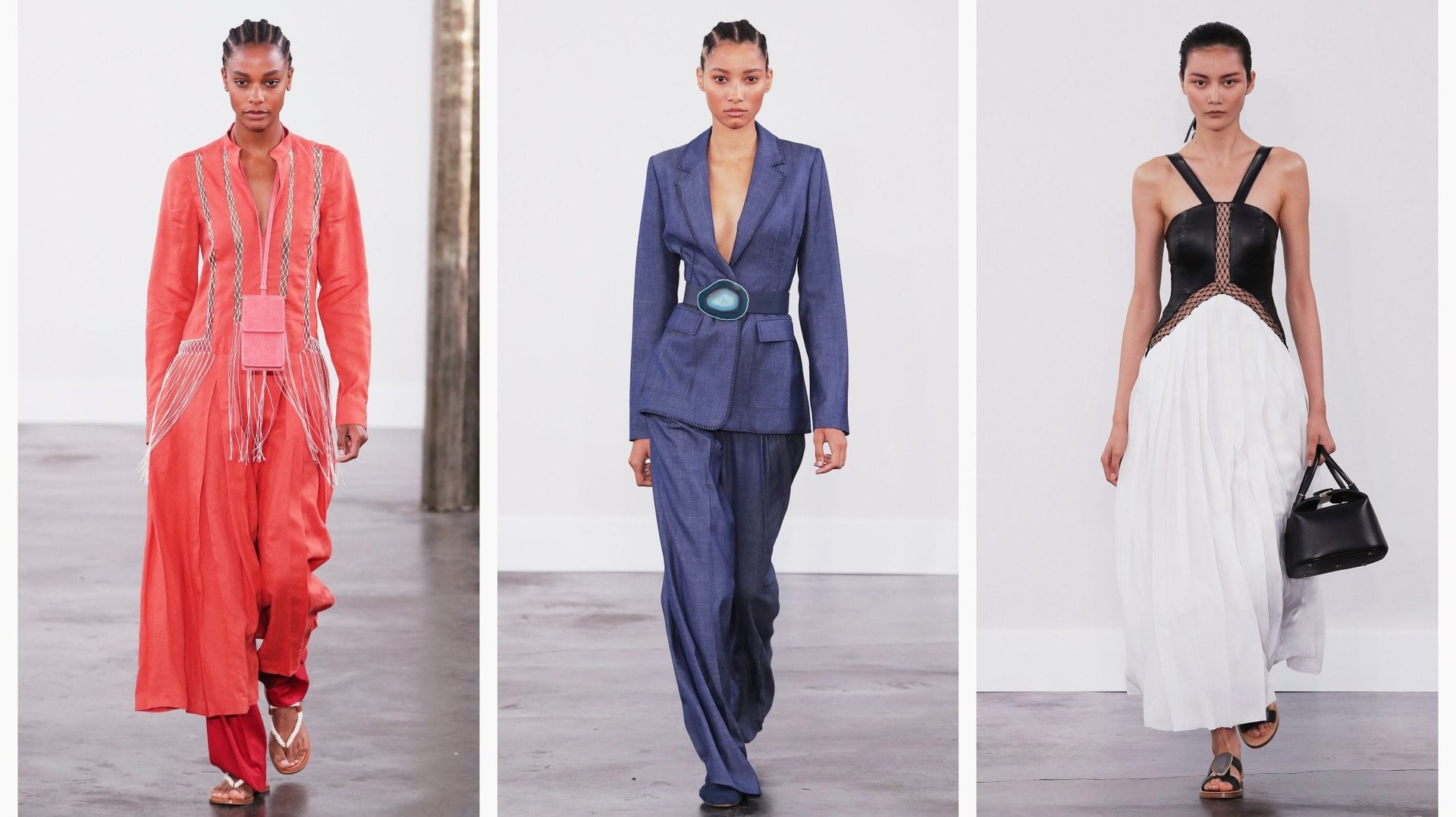Is carbon-neutrality fashion’s next runway trend?
The cries are growing louder for fashion to reduce its huge environmental impact, but so far criticism has mostly focused on supply chains, where most of fashion’s emissions, resource use, and pollution happen. On the runway, it’s business as usual.


The cries are growing louder for fashion to reduce its huge environmental impact, but so far criticism has mostly focused on supply chains, where most of fashion’s emissions, resource use, and pollution happen. On the runway, it’s business as usual.
But there are early indications that this is starting to change. On Sept. 10, at New York Fashion Week, Gabriela Hearst staged what it says is the industry’s first carbon-neutral runway show. Today, the New York Times reported that Gucci will also stage a carbon-neutral show when it presents during Milan Fashion Week later this month. Not only that, the company announced it is making its entire supply chain carbon neutral.
Runway shows tend to be big, energy-guzzling productions that result in small mountains of waste in the form of decor, water bottles, paper products, and more. Hundreds of shows are staged each season, yet nobody really knows what their carbon footprint is. “You can calculate the carbon footprint of a flight, but in terms of [the carbon footprint of] a fashion show, that data doesn’t exist,” Maxine Bédat, founder of the New Standard Institute, which advocates for change in the industry, recently told Vogue.
Carbon-neutral shows won’t try to produce zero emissions—that would be impossible. Instead, the brands tally their carbon use and then donate the amount of money needed to offset that carbon footprint to programs that will reduce equivalent emissions elsewhere. The cost of offsets can vary, since there’s no set price on carbon emissions.
“We will offset everything, from the travel emissions of 1,000 guests and 900 workers, including models, production staff, and Gucci employees, to using recycled wood for the set and Forest Stewardship Council-certified paper invites,” Gucci’s CEO, Marco Bizzarri, told the Times.
Gabriela Hearst said in a release that it worked with sustainability consultants EcoAct and runway-production company Bureau Betak. “Bureau Betak worked to minimize the amount needed to be offset, thereafter recording and reporting on power usage, transportation, catering, and waste, for EcoAct to calculate the resulting emissions of the show, evaluate the overall carbon footprint, and determine the consequential offset amounts,” it said. The equivalent dollar amount will go to EcoAct’s Hifadhi-Livelihoods Project in Kenya.
Burberry is still finalizing its plans as it examines the full footprint of its upcoming London show, but it has also said (paywall) it intends to offset the carbon impacts of people such as guests and models traveling to London specifically for the event.
A few shows don’t exactly equal a sea change, but labels across the board are being forced to pay attention to the ways in which their business affects the environment—runway shows included. Saint Laurent, which like Gucci is owned by luxury group Kering, drew criticism in June for holding a show on a California beach and disregarding environmental regulations meant to protect its fragile natural ecosystem. Luxury group LVMH has guidelines for its brands to keep their events more sustainable, and Copenhagen Fashion Week has started to offset its carbon impact.
Emissions are just one way fashion can harm the environment, but a significant one. It’s notoriously difficult to pin down exactly how large fashion’s impact is. Quantis, a firm that guides top brands on sustainability, estimates that the global apparel and footwear industries combined produce 8% of all greenhouse-gas emissions. Most of that comes from brands’ supply chains. With no change, their climate impact will increase significantly by 2030.
To that end, Gucci has announced the major step of offsetting its total emissions annually in its own operations and through its entire supply chain by donating to an organization that supports forest conservation. “A new era of corporate accountability is upon us and we need to be diligent in taking all steps to mitigate our impacts, including being transparent and responsible for our [greenhouse gas] emissions across our supply chains,” Bizzarri said in a statement.
With any luck, it sets a trend.